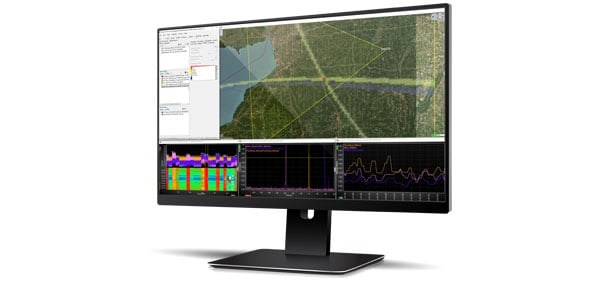The latest version of RFeye Site 1.49 (available now via the Extranet) contains a couple of small features that could have a large impact for some of our customers.
WAV-E support
Firstly, is the support for exporting I/Q in WAV-E format. When you ask a Node to capture an I/Q snippet, in addition to XDAT and HDF5, you can now set it to record in WAV-E. This feature is particularly useful if the signal you are recording contains audio, such as voice traffic. Standard wav IQ recordings are lossy because the meta section is intended for audio, so you only have limited information such as sample rate and number of samples. WAV- E adds additional information like signal time, frequency, and bandwidth. A WAV-E recording can be useful as evidence when prosecuting unauthorized broadcasters e.g. pirate radio or for analyzing PPT radio signals for intelligence gathering.
Pulse within pulse detection
RFeye Site already has the ability to detect signals based on their pulse frequency, amplitude, and duration. However, if a pulsed signal is hiding within another pulsed signal, it can be hard to detect the signal you are looking for. This is where pulse within pulse detection comes in.
Basic pulse detection
If you a looking for a specific pulsed RF signal you can configure the signal detector in RFeye Site to look for pulses within a certain frequency range, amplitude, and duration.
If the detector finds a pulse that matches the specified parameters, it will return a positive result. But sometimes a signal can be masked by another pulse. In the example below, the detector is set to look for “Pulse 1”. However, Pulse 1 is masked by Pulse 2, so the detector can’t see it is a separate signal.
New pulse within pulse detection
To combat this scenario, there is an option within the new version of RFeye Site to turn on Pulse In Pulse. When enabled, RFeye Site will examine each detected pulse to look for the presence of additional signals. It will then apply a new threshold to check if this signal matches your desired pulse. This feature can be useful in detecting radar pulses that may be hidden by 5G signals for example.
In addition to these new features, RFeye Site contains a raft of small improvements to the user experience and bug fixes. For the full list, please see the release note on the Extranet.
If you would like to know more about these features or anything else within RFeye site, please get in touch.

